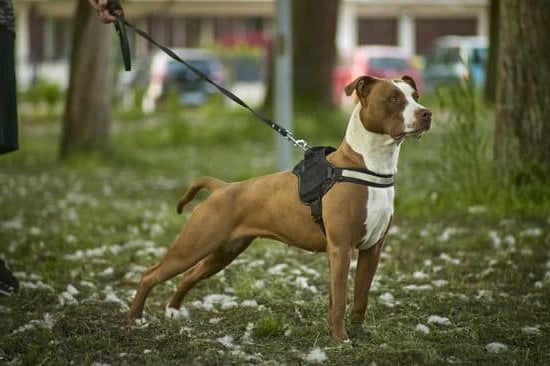What is cognitive dog training? Cognitive dog training is a method that focuses on understanding and working with a dog’s natural cognitive abilities to enhance their learning and behavior. This approach recognizes the intelligence and problem-solving skills of dogs, and aims to create a more fulfilling and effective training experience for both the dog and the owner.
In this section, we will delve into the concept of cognitive dog training, exploring its significance in the realm of dog training. As we uncover the principles behind this approach, we will gain insight into how it differs from traditional methods and why it has gained popularity among trainers and dog owners alike.
Understanding the canine mind is crucial in effectively training dogs. By recognizing and embracing their mental capabilities, we can develop training techniques that cater to their unique learning styles. Through this article, we will explore the cognitive abilities of dogs and how they learn, shedding light on how cognitive dog training seeks to tap into these capacities to foster positive behavior and skills in our furry companions.
Understanding the Canine Mind
Dogs are intelligent creatures with remarkable cognitive abilities. Understanding how they learn and process information is essential for effective dog training. By gaining insight into the canine mind, trainers can tailor their approach to maximize learning and behavioral outcomes.
Cognitive Abilities of Dogs
Dogs have impressive cognitive abilities, including memory, problem-solving skills, and emotional intelligence. They are capable of complex thought processes and can understand human communication cues. This makes them highly trainable and adaptable to various learning tasks. Additionally, dogs have social cognition, allowing them to navigate their environment and interact with other animals and humans.
How Dogs Learn
Dogs learn through a combination of associative learning, observational learning, and trial-and-error. They respond to rewards such as treats or praise, which reinforces desired behaviors. Additionally, dogs can learn by observing the actions of humans or other animals. Understanding these learning mechanisms is crucial for developing effective training techniques that resonate with the canine mind.
Importance of Cognitive Understanding in Training
By recognizing the cognitive abilities of dogs and how they learn, trainers can create training programs that are engaging, rewarding, and meaningful for the animals. This understanding allows for more effective communication between humans and dogs, resulting in stronger bonds and successful training outcomes. Furthermore, it promotes a more respectful and humane approach to working with our canine companions.
Overall, delving into the cognitive abilities of dogs provides a deeper appreciation for their intelligence and enhances the training experience for both dogs and their owners.
Principles of Cognitive Dog Training
Cognitive dog training is a method that focuses on understanding and working with the cognitive abilities of dogs to achieve desired behaviors. This approach emphasizes mental stimulation, problem-solving, and learning through positive reinforcement. The principles and techniques used in cognitive dog training are based on the understanding of how dogs think, learn, and process information.
Key Principles of Cognitive Dog Training:
– Positive Reinforcement: Cognitive dog training relies on the use of positive reinforcement to encourage desired behaviors. This can include rewards such as treats, toys, or verbal praise when the dog responds correctly to a command or engages in a specific behavior.
– Mental Stimulation: Cognitive training involves engaging a dog’s mind through activities that require them to think and solve problems. This can include puzzle toys, interactive games, and training exercises that challenge their cognitive abilities.
– Clear Communication: Effective communication is essential in cognitive dog training. Clear signals and consistent cues help dogs understand what is expected of them and facilitate their learning process.
– Patience and Understanding: Cognitive training requires patience from the trainer as dogs may take time to grasp new concepts or behaviors. Understanding the individual learning style and pace of each dog is crucial for successful cognitive training.
Techniques Used in Cognitive Dog Training:
1. Targeting: Teaching a dog to touch an object with their nose or paw on command helps improve their focus, coordination, and understanding of cues.
2. Shaping: Gradually shaping a behavior by rewarding small steps toward the desired action encourages problem-solving skills and reinforces positive behaviors.
3. Problem-Solving Games: Engaging dogs in games that require them to figure out how to access treats or toys stimulates their problem-solving abilities and keeps them mentally sharp.
By incorporating these principles and techniques into their training methods, owners can effectively engage their dog’s mental abilities while building a strong bond based on trust, communication, and mutual respect.
Benefits of Cognitive Dog Training
Cognitive dog training is a method that focuses on engaging a dog’s mind as well as their body. By incorporating mental exercises and challenges into a dog’s training routine, cognitive training aims to stimulate their problem-solving abilities, memory, and overall mental sharpness. This approach has been gaining popularity among dog trainers and owners due to the numerous benefits it offers to canine companions.
One of the key advantages of cognitive dog training is its ability to improve a dog’s behavior and responsiveness. Mental stimulation can help prevent boredom, which is often a cause of destructive behavior in dogs.
When dogs are mentally engaged, they are less likely to exhibit problematic behaviors such as excessive barking, chewing, or digging. Additionally, cognitive training can enhance a dog’s ability to focus and follow commands, leading to better obedience and overall communication between the owner and the pet.
Furthermore, cognitive training has been found to promote emotional well-being in dogs. Just like humans, dogs can benefit from activities that challenge their minds and provide them with a sense of accomplishment. Engaging in cognitive exercises can boost a dog’s confidence and reduce stress or anxiety. This not only contributes to a happier and more contented pet but also strengthens the bond between the dog and their owner.
| Advantages | Description |
|---|---|
| Improved behavior | Mental stimulation reduces boredom and prevents destructive behaviors. |
| Emotional well-being | Cognitive exercises boost confidence, reduce stress, and strengthen the bond between dog and owner. |
Challenges and Misconceptions
Common Misconceptions
One common misconception about cognitive dog training is that it is only suitable for certain breeds or intelligence levels. In reality, all dogs have the ability to benefit from cognitive training, regardless of their breed or perceived intelligence. Another misconception is that cognitive training is time-consuming and difficult, when in fact there are various simple techniques that can easily be incorporated into a dog’s daily routine.
Overcoming Challenges
One of the challenges of cognitive dog training is finding the right balance between mental stimulation and physical exercise. It’s important to ensure that the dog receives both types of stimulation to maintain overall well-being. Additionally, some dogs may initially show resistance to new training methods, requiring patience and consistency from their owners.
Educating Dog Owners
To overcome misconceptions and challenges related to cognitive dog training, it’s important to educate dog owners about the benefits and principles of this approach. Providing resources such as workshops, online tutorials, and informative articles can help dispel myths and demonstrate the feasibility of implementing cognitive training at home. Encouraging open-mindedness and a willingness to try new methods can also support successful implementation of cognitive training for dogs.
Implementing Cognitive Training at Home
Cognitive dog training is an excellent way to stimulate your dog’s mind and enhance their overall well-being. By incorporating cognitive training into your daily routine with your furry friend, you can help them develop problem-solving skills, improve their focus, and strengthen the bond between you and your pet. Here are some tips and strategies for dog owners to implement cognitive training at home:
1. Interactive Toys: Invest in interactive toys that require your dog to think and solve puzzles in order to receive a treat or reward. These toys can provide mental stimulation and prevent boredom, especially when you’re not around.
2. Obedience Training: Use cognitive training techniques during obedience training sessions by incorporating commands that require your dog to think before acting. For example, teach them to wait before they can have their meal or go outside.
3. Hide and Seek: Engage in games of hide and seek with your dog by hiding treats around the house or yard for them to find. This encourages them to use their sense of smell and mental agility to locate the hidden treasures.
By incorporating these tips and strategies into your daily routine with your dog, you can provide them with the mental stimulation they need to thrive. Cognitive training not only challenges their intellect but also enhances their overall well-being, making for a happier and healthier canine companion.
Success Stories
Cognitive dog training has proven to be highly effective in shaping the behavior and abilities of our canine companions. One notable success story is that of Max, a rescue dog who was initially timid and anxious. Through cognitive training techniques such as puzzle toys and interactive games, Max gained confidence and became more social with both humans and other dogs. His progress demonstrates the incredible impact that cognitive training can have on a dog’s emotional well-being.
Another example is Bella, a high-energy Australian Shepherd who struggled with impulse control and obedience. By incorporating cognitive training exercises into Bella’s daily routine, her owner noticed a significant improvement in her focus and responsiveness. This enabled Bella to excel in agility competitions and even earn various titles. These success stories highlight how cognitive dog training can address specific behavioral issues and unlock a dog’s full potential.
Additionally, there is the heartwarming story of Charlie, a senior dog diagnosed with cognitive dysfunction syndrome (similar to Alzheimer’s disease in humans). Through the use of specialized cognitive stimulation activities tailored to his condition, Charlie experienced an improvement in his mental acuity and overall quality of life. These inspiring examples demonstrate that cognitive dog training is not only beneficial for young and healthy dogs but also for those facing cognitive challenges due to aging or medical conditions.
Overall, these success stories serve as compelling evidence of the transformative effects of cognitive training on dogs of all ages, breeds, and backgrounds. As we continue to explore this approach, it is clear that cognitive dog training has the potential to greatly enhance the lives of our beloved pets while fostering stronger bonds between dogs and their human companions.
The Future of Cognitive Dog Training
In conclusion, the future of cognitive dog training holds great potential for further advancements and innovations in the field. As our understanding of the canine mind continues to expand, we can expect to see new techniques and approaches emerging that are tailored to the unique cognitive abilities of dogs. With ongoing research and development, there is a possibility of uncovering even more effective ways to engage and stimulate dogs mentally, ultimately enhancing their overall well-being.
Moreover, as technology continues to advance, there is an opportunity for the development of new tools and resources that can support cognitive dog training. This may include innovative apps or devices designed to provide interactive mental stimulation for dogs, as well as advances in virtual reality or artificial intelligence that could be utilized in training programs. The potential for integrating these technological advancements into cognitive dog training represents an exciting prospect for the future.
Overall, the future of cognitive dog training appears promising, with the potential for continued growth and evolution in this field. By staying informed about the latest developments and remaining open-minded to new approaches, dog owners and trainers can contribute to the ongoing progress of cognitive dog training.
With a shared commitment to maximizing the cognitive potential of our canine companions, we can look forward to a future where dogs are not only trained effectively but also intellectually engaged and fulfilled.
Frequently Asked Questions
What Is Dog Cognitive Learning?
Dog cognitive learning refers to the mental processes and abilities that dogs use to acquire knowledge, understand their environment, and solve problems. This includes their capacity for memory, perception, reasoning, and decision-making in various situations.
What Are the Cognitive Skills of a Dog?
The cognitive skills of a dog include memory retention, spatial awareness, problem-solving abilities, and the capacity for associative learning. Dogs can also exhibit social cognition by understanding human emotions and intentions, as well as communication through body language and vocal cues.
How Does Cognitive Training Work?
Cognitive training for dogs typically involves engaging them in activities that stimulate their mental faculties. This can include obedience training, interactive games, puzzle toys, and teaching them new commands or tricks. By providing mental challenges and rewards, cognitive training helps dogs develop better problem-solving abilities and a deeper understanding of their environment.

Welcome to the blog! I am a professional dog trainer and have been working with dogs for many years. In this blog, I will be discussing various topics related to dog training, including tips, tricks, and advice. I hope you find this information helpful and informative. Thanks for reading!





